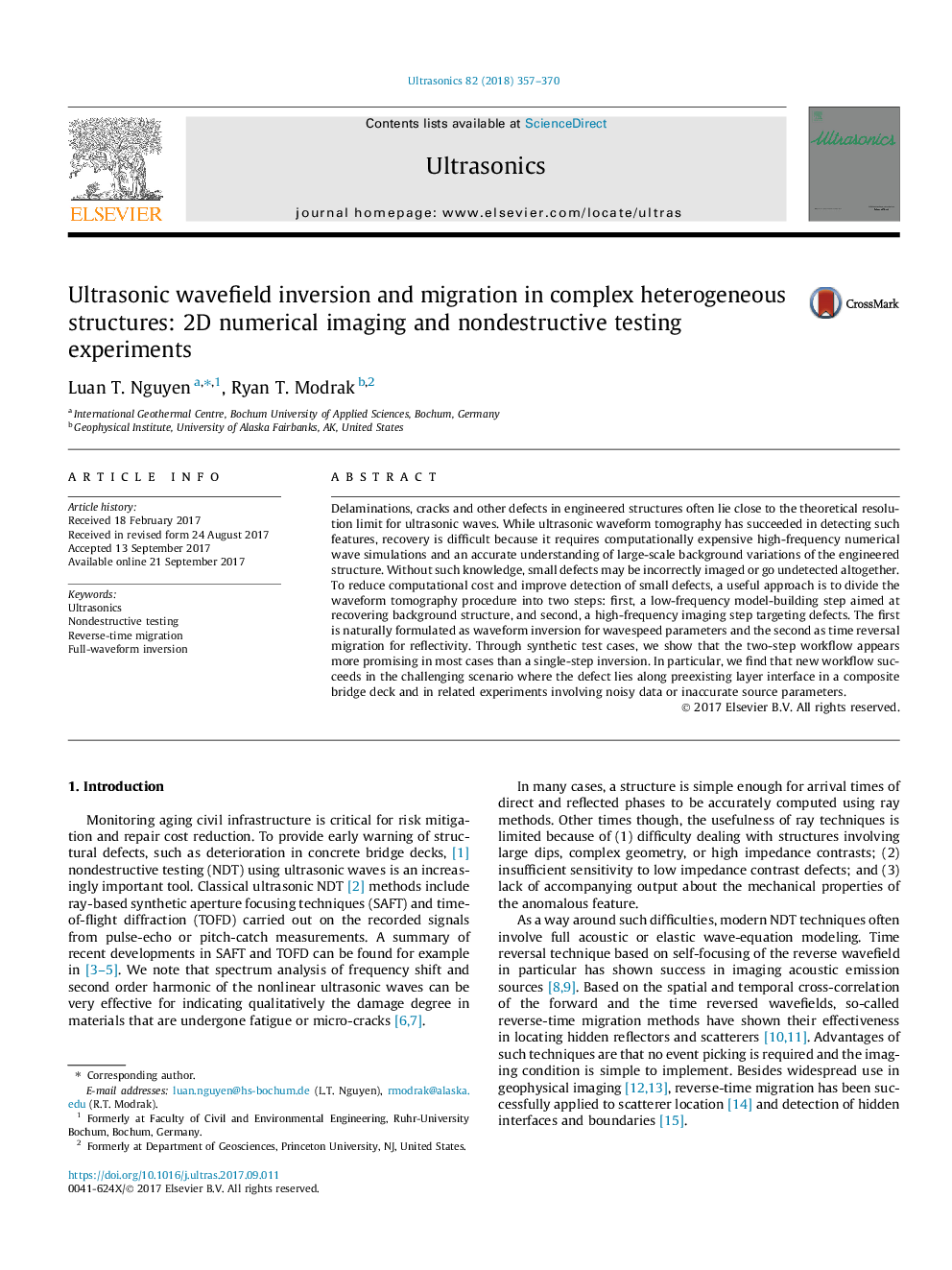| Article ID | Journal | Published Year | Pages | File Type |
|---|---|---|---|---|
| 5485289 | Ultrasonics | 2018 | 14 Pages |
Abstract
Delaminations, cracks and other defects in engineered structures often lie close to the theoretical resolution limit for ultrasonic waves. While ultrasonic waveform tomography has succeeded in detecting such features, recovery is difficult because it requires computationally expensive high-frequency numerical wave simulations and an accurate understanding of large-scale background variations of the engineered structure. Without such knowledge, small defects may be incorrectly imaged or go undetected altogether. To reduce computational cost and improve detection of small defects, a useful approach is to divide the waveform tomography procedure into two steps: first, a low-frequency model-building step aimed at recovering background structure, and second, a high-frequency imaging step targeting defects. The first is naturally formulated as waveform inversion for wavespeed parameters and the second as time reversal migration for reflectivity. Through synthetic test cases, we show that the two-step workflow appears more promising in most cases than a single-step inversion. In particular, we find that new workflow succeeds in the challenging scenario where the defect lies along preexisting layer interface in a composite bridge deck and in related experiments involving noisy data or inaccurate source parameters.
Related Topics
Physical Sciences and Engineering
Physics and Astronomy
Acoustics and Ultrasonics
Authors
Luan T. Nguyen, Ryan T. Modrak,
